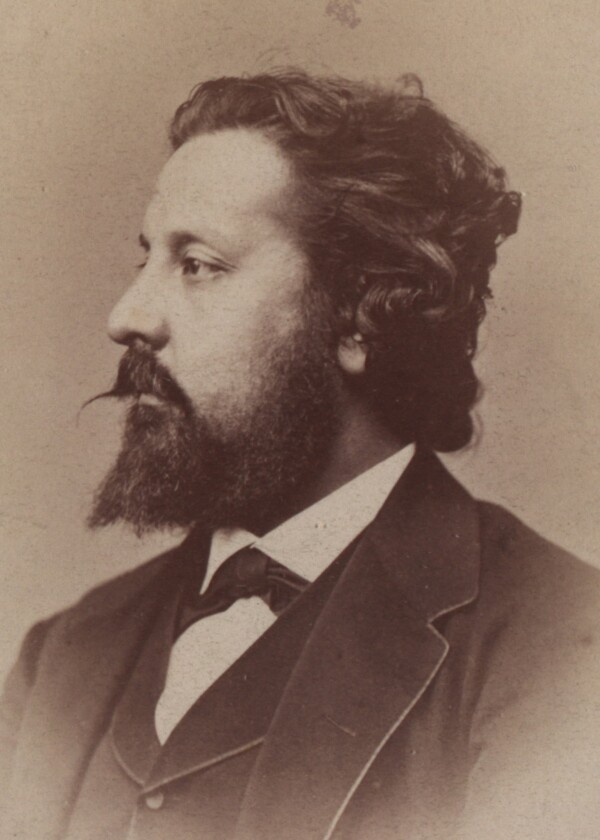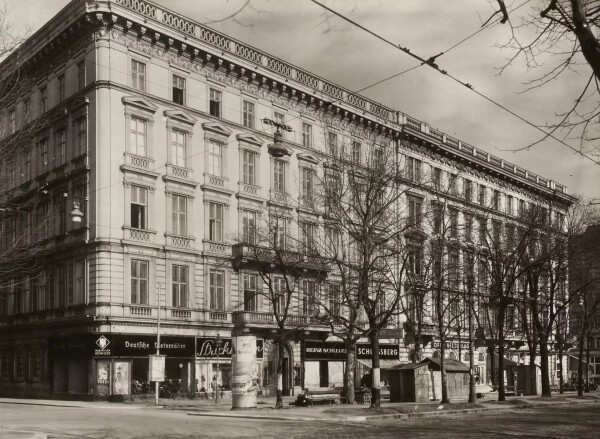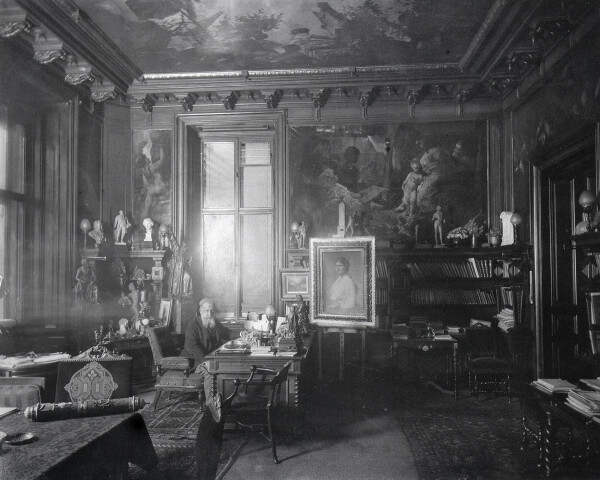Nicolaus Dumba

Nicolaus Dumba photographed by Emil Rabending, around 1867
© Wien Museum

Palais Dumba photographed by Bruno Reiffenstein, 1941, Wien Museum
© Wien Museum

Nicolaus Dumba in his study, around 1890
© Picture Archives and Graphics Department, Austrian National Library
Nicolaus Dumba was an Austrian industrialist and liberal politician. A patron of the arts, he supported the contemporary art and cultural scene and its development. He had his city palace on Vienna’s Ringstraße decorated by Hans Makart, Gustav Klimt, Georg Klimt, and Franz Matsch.
Nicolaus Dumba was born in Vienna in 1830 the son of a wealthy Greco-Aromanian merchant. His father, who promoted trade relations between the Ottoman Empire and the Austro-Hungarian monarchy, enabled him to attend the Akademisches Gymnasium, a prominent higher secondary school, and sojourn abroad repeatedly. Soon afterwards Dumba devoted himself to his commercial and political career.
Dumba as a Music and Art Lover
Besides politics, Dumba, a passionate collector of “Schubertiana,” played a prominent and active part on Vienna’s art and cultural scene: for several years he was in charge of the business operations of the Austrian Kunstverein, in 1864 he became a member of the Vienna Künstlerhaus [Cooperative of Visual Artists in Vienna] and functioned as chairman of the Vienna Men’s Choral Society and the Society of Friends of Music in Vienna. He also promoted numerous artists and musicians, some of whom were his friends, including Rudolf von Alt, Caspar Zumbusch, and Richard Wagner, and was a political and financial supporter of cultural institutions and associations.
The Vienna City Palace
In 1865/66 Nicolaus Dumba had his own palace built on Vienna’s Ringstraße, opposite the Stadtpark. He commissioned the “Prince of Painters” Hans Makart with the decoration of his study. The so-called “Makart Room” at the Dumba Palace would later be eternalized by the painters Rudolf von Alt and Hans Temple (both works are now at the Wien Museum, Vienna).
The music room and the dining room were to be decorated starting in 1893. Dumba entrusted the young artists Gustav Klimt and Franz Matsch. The latter decorated the dining room, which no longer exists, while Klimt painted the overdoors Music (1897/98) and Schubert at the Piano (1899) for the music room (both were destroyed by fire at Immendorf Castle in May 1945). The correspondence between Klimt and Dumba on this project is now conserved at the Wienbibliothek and the Austrian National Library.
Honors Received by the Art Patron
For his political and cultural commitment, Dumba received numerous honors and honorary memberships. In 1890 the City of Vienna appointed him honorary citizen. On the occasion of his death in 1900, a street close to the Vienna Musikverein and the Vienna Künstlerhaus was named after the industrialist.
Literature and sources
- Neue Freie Presse, 26.03.1900, S. 3.
- Neue Illustrierte Zeitung, 05.07.1874, S. 14-15.
- Alice Strobl (Hg.): Gustav Klimt. Die Zeichnungen, Band I, 1878–1903, Salzburg 1980, S. 101-103.
- Kunst und Kunsthandwerk. Monatsschrift des k. k. Österreichischen Museums für Kunst und Industrie, 2. Jg., Heft 10 (1899), S. 341-365.
- Felix Czeike (Hg.): Historisches Lexikon Wien, Band 2, Vienna 1993, S. 107-108.
- Österreichische Akademie der Wissenschaften (Hg.): Österreichisches Biographisches Lexikon 1815–1950, Band 1, Vienna 1994.
- Illustrirtes Wiener Extrablatt, 24.03.1900, S. 2-3.
- Agnes Husslein-Arco, Alexander Klee (Hg.): Klimt und die Ringstraße, Ausst.-Kat., Lower Belvedere (Vienna), 05.07.2015–11.10.2015, Vienna 2015.

